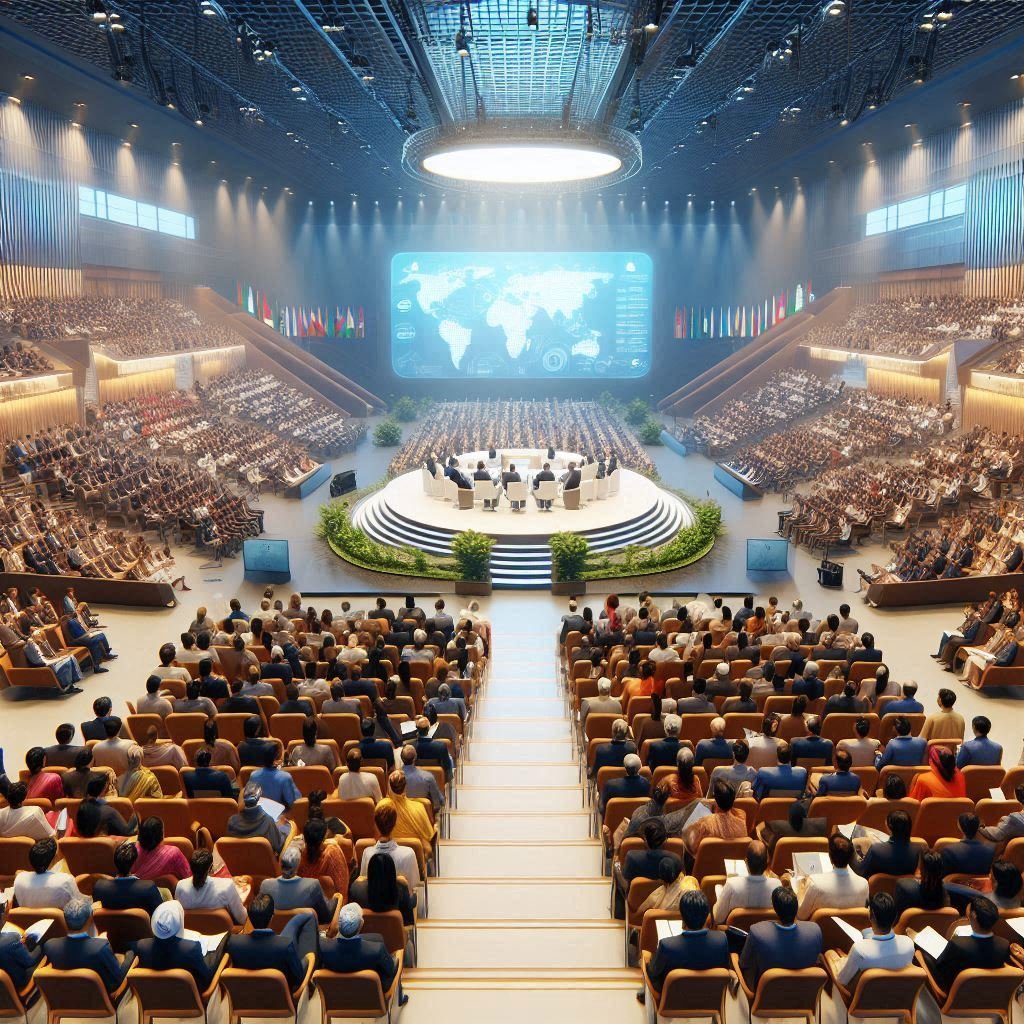Mathematics enthusiasts, researchers, and educators from around the globe recently converged in India for an inspiring and intellectually stimulating Mathematics Conference. This annual event has grown in prominence, attracting some of the brightest minds in the field to discuss the latest trends, innovations, and challenges in mathematics.

1. Inaugural Address and Keynote Speakers
The conference kicked off with an inspiring inaugural address by Dr. Shantanu Agarwal, a renowned mathematician and professor. His speech emphasized the critical role of mathematics in solving real-world problems and the importance of fostering a collaborative research environment.
The keynote speakers included:
- Dr. Priya Natarajan, who presented her groundbreaking work on black holes and the mathematical models that predict their behavior.
- Professor Manjul Bhargava, who shared insights into his research on number theory and its implications for cryptography.
- Dr. Nalini Anantharaman, who discussed the applications of ergodic theory in understanding complex systems.
2. Innovative Research Presentations
One of the most exciting aspects of the conference was the presentation of cutting-edge research. Highlights included:
- Quantum Computing and Mathematics: A session focused on the mathematical foundations of quantum computing, highlighting recent advances and potential applications.
- Mathematical Biology: Researchers presented models predicting the spread of infectious diseases, which have become particularly relevant in the post-pandemic world.
- Cryptography and Security: New algorithms and techniques to enhance data security were discussed, with an emphasis on post-quantum cryptography.
3. Workshops and Interactive Sessions
The conference offered a variety of workshops and interactive sessions designed to engage participants and promote hands-on learning. Notable workshops included:
- Mathematical Modelling in Industry: This workshop provided insights into how mathematical models are applied in various industries, from finance to engineering.
- Educational Techniques in Mathematics: Educators shared innovative teaching strategies and tools to make mathematics more accessible and engaging for students.
4. Panel Discussions
Several panel discussions brought together experts to debate and discuss pressing issues in the field of mathematics. Key topics included:
- The Role of Artificial Intelligence in Mathematics: Experts discussed how AI is transforming mathematical research and problem-solving.
- Gender Diversity in Mathematics: This panel highlighted the challenges and opportunities for women in mathematics, with a focus on creating a more inclusive environment.
5. Networking Opportunities
The conference provided ample opportunities for networking, fostering collaborations among participants. Informal gatherings, coffee breaks, and social events allowed attendees to connect with peers, share ideas, and explore potential partnerships.
6. Student Engagement
Recognizing the importance of nurturing the next generation of mathematicians, the conference included several initiatives aimed at students. Highlights included:
- Student Paper Competitions: Young researchers presented their work, receiving feedback from experienced mathematicians.
- Mentorship Programs: Established mathematicians offered guidance and advice to students, helping them navigate their academic and research careers.
7. Exhibition Hall
The exhibition hall featured booths from academic institutions, publishers, and technology companies. Participants had the opportunity to explore the latest textbooks, software, and educational tools designed to enhance mathematical learning and research.
Mathematics Conference in India was a resounding success, bringing together a diverse group of individuals passionate about mathematics. The event showcased the latest research, facilitated meaningful discussions, and fostered collaborations that will undoubtedly advance the field. As the conference concluded, participants left with new knowledge, inspiration, and a renewed commitment to the transformative power of mathematics.
Q1: What was the overarching theme of the Mathematics Conference in India?
A1: The conference focused on “Bridging Theoretical Mathematics and Practical Applications,” aiming to foster discussions on how pure mathematical theories can be translated into real-world solutions.
Q2: Can you name a few notable mathematicians who attended the conference?
A2: The conference was graced by eminent mathematicians such as Dr. A. K. Lal, known for his work in algebraic geometry, and Prof. R. Gupta, a renowned number theorist.
Q3: Were there any groundbreaking papers presented at the conference?
A3: Yes, one of the highlights was a paper on “Topology Optimization,” which introduced innovative methods for material distribution in manufacturing processes.
Q4: How did the conference address the teaching and learning of mathematics?
A4: There were several workshops dedicated to new pedagogical approaches, including the use of technology in mathematics education to enhance interactive learning.
Q5: What advancements in computational mathematics were showcased?
A5: The conference featured a session on computational mathematics where the latest algorithms for numerical analysis and their applications in engineering were discussed.
Q6: Was there any focus on statistics and data science?
A6: Absolutely, with the rise of big data, there was a significant emphasis on statistical methods for data analysis and machine learning techniques for predictive modeling.
Q7: Did the conference have any cultural events or activities?
A7: Yes, the conference included cultural evenings that showcased traditional Indian music and dance, providing a delightful blend of mathematics and culture.

